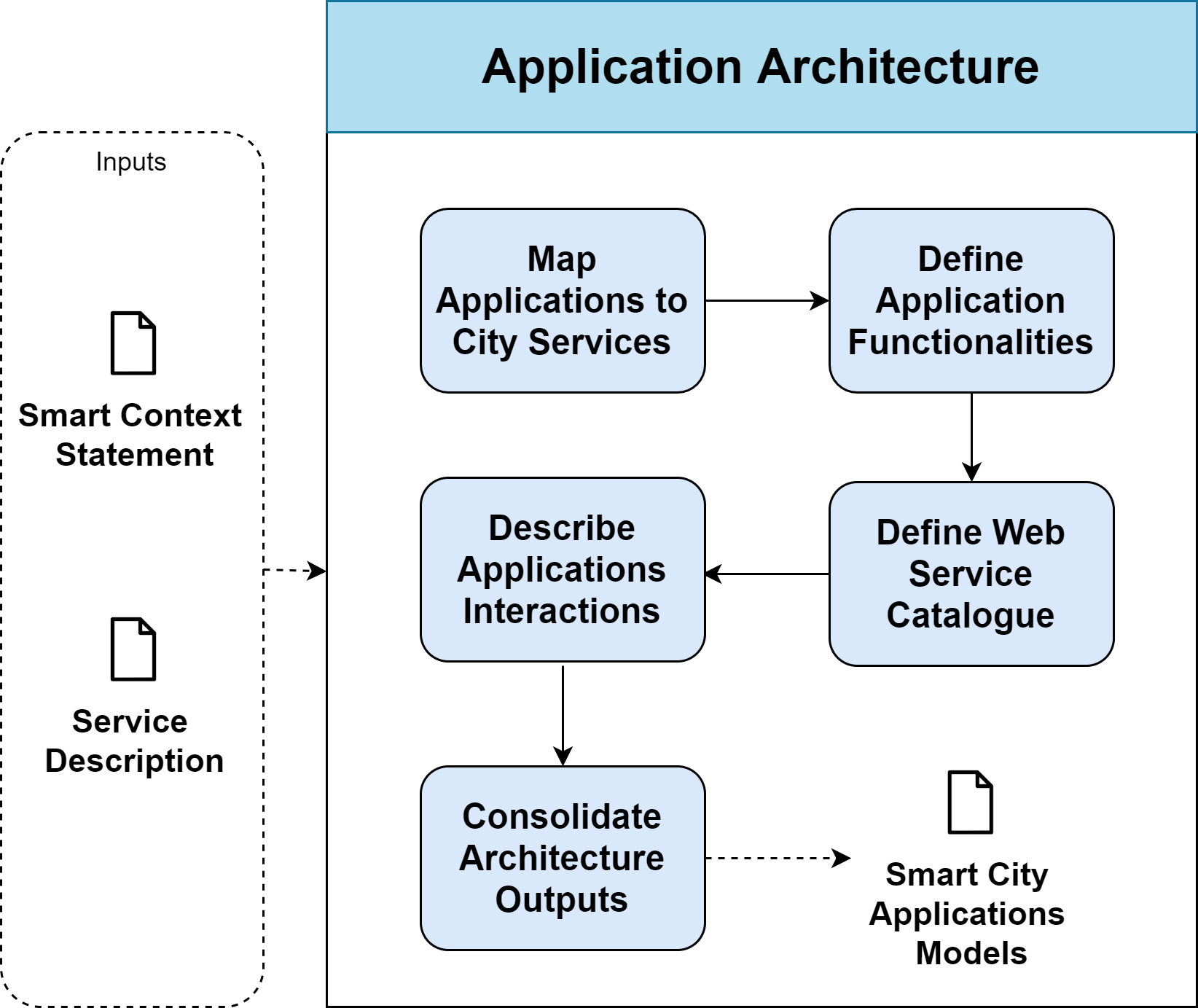- Map Applications to City Services
- Conduct the data classification of the services from multiple sources (e.g. sensors, smart meters, smartphones, and other data sources).
- Define Application Functionalities
- Conduct the data classification of the services from multiple sources (e.g. sensors, smart meters, smartphones, and other data sources).
- Define Web Service Catalogue
- Conduct the data classification of the services from multiple sources (e.g. sensors, smart meters, smartphones, and other data sources).
- Describe Applications Interactions
- Conduct the data classification of the services from multiple sources (e.g. sensors, smart meters, smartphones, and other data sources).
- Consolidate Architecture Outputs
- Conduct the data classification of the services from multiple sources (e.g. sensors, smart meters, smartphones, and other data sources).
Application Architecture
The Application Architecture process aims to develop the Data and Application Architecture, describing how the city’s Information Systems Architecture will enable the Service Architecture. The Information Architecture describes the interaction of the applications and data of the city. For example, a Smart City dashboard enables city monitoring by displaying real-time data on weather, air pollution, public transportation, delays, public bikes availability , river level, and electricity (Kitchin, R., 2014).
Activities
The Application Architecture lifecycle stage of the Information Architecture Process (see fig. 1) includes the following main activities and subprocesses:

References
- Kitchin, R., 2014. The real-time city? Big data and smart urbanism. GeoJournal, 79(1), pp.1-14.
- The Open Group. “Open Group Standanotepadrd TOGAF Version 9.1”, 2011.